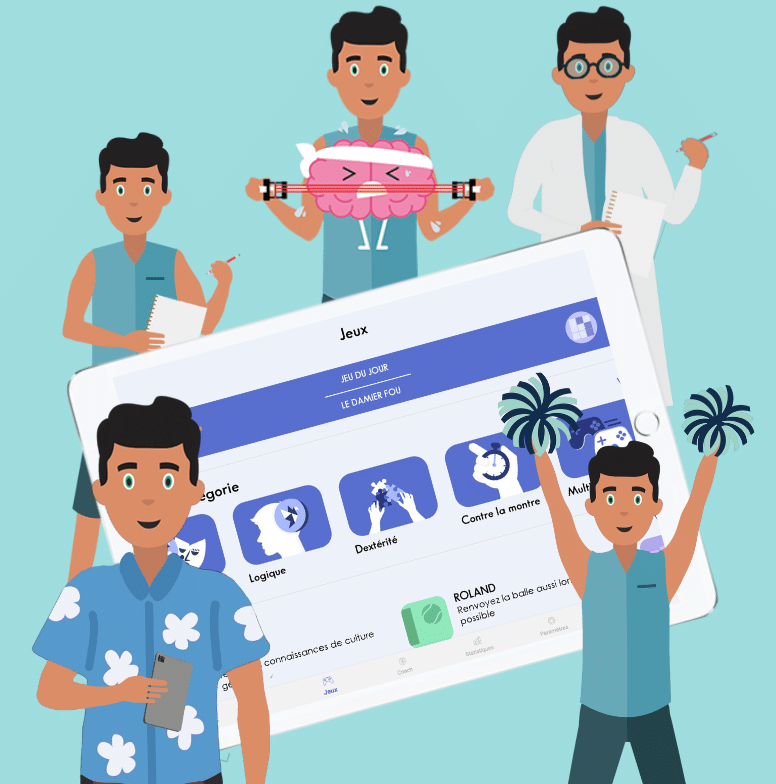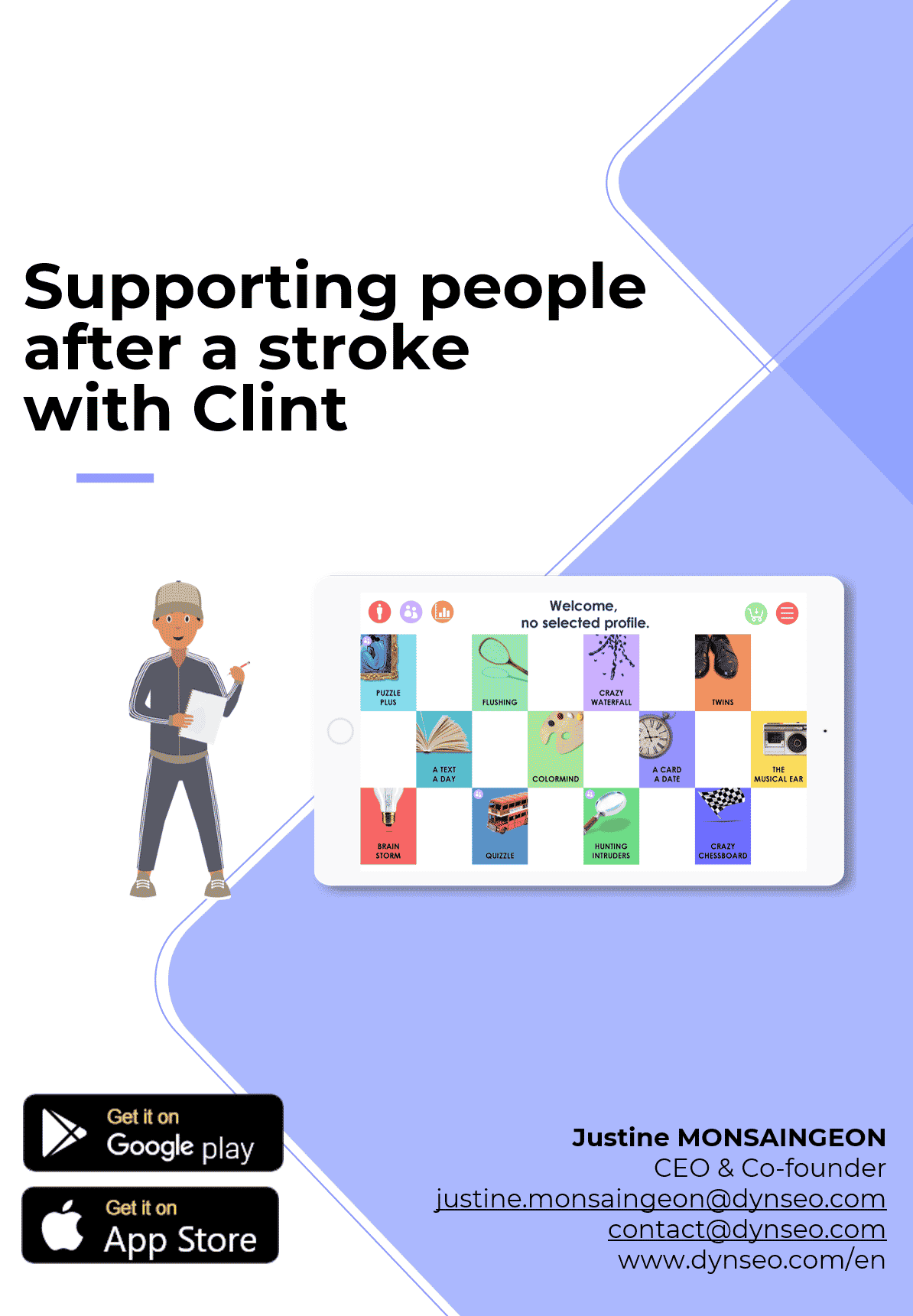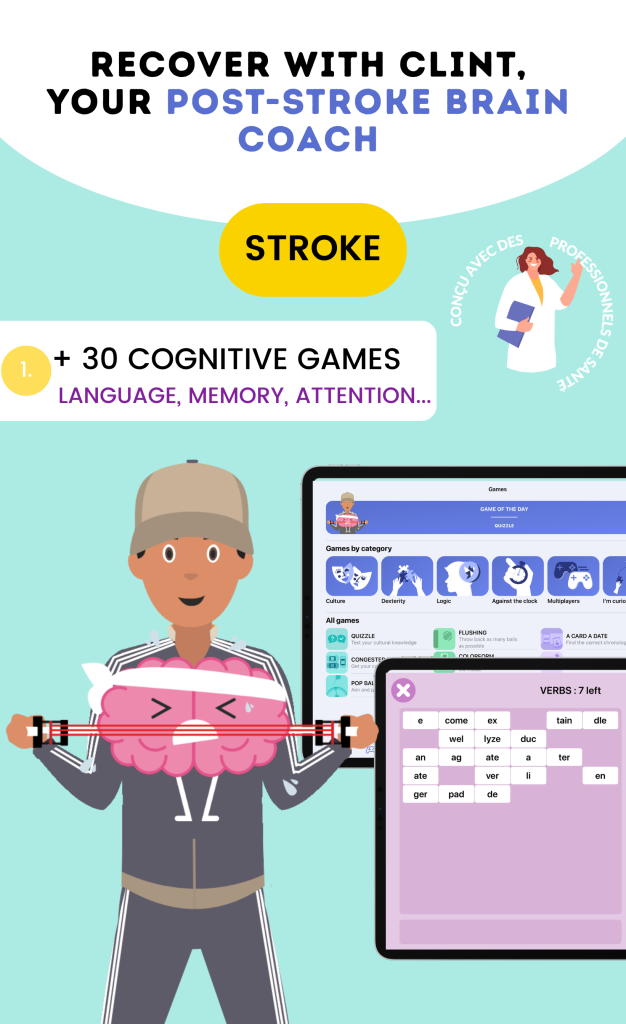The Cerebrovascular Accident (Stroke) is unfortunately a complicated period often followed by a crucial rehabilitation phase. This post-stroke stage plays a decisive role in the recovery of patients’ physical and cognitive abilities. One of the dilemmas faced by individuals and their families is deciding between home rehabilitation and that provided in a care center. This exploration will analyze the advantages and disadvantages of these two approaches, aiming to provide insights for making informed decisions about the best rehabilitation path to follow.
Home Rehabilitation
Advantages of Home Rehabilitation
Home rehabilitation offers a familiar environment conducive to post-stroke recovery. This presents several significant advantages, including the ability to personalize the rehabilitation program according to the specific needs of the patient.
Challenges of Home Rehabilitation
However, this approach is not without challenges. The lack of constant professional supervision can be a barrier, and the material limitations at home may restrict the range of exercises and rehabilitation activities. Finding the right balance between autonomy and assistance thus becomes a crucial aspect of post-stroke home rehabilitation.
Rehabilitation in Care Centers
Rehabilitation in care centers offers a professional framework dedicated to post-stroke recovery, presenting significant advantages for patients.
Professional Supervision
One of the major strengths of rehabilitation in care centers lies in the presence of constant professional supervision. Specialized teams can adapt rehabilitation programs in real-time, thus ensuring a personalized and effective approach.
Access to Specialized Equipment
Care centers are equipped with specialized materials designed to meet the varied needs of post-stroke patients. This allows for the exploration of a wide range of exercises and therapies, thus promoting complete recovery tailored to each individual.
The transition to rehabilitation in care centers, however, is not without challenges. The following sections of this analysis will explore these advantages and disadvantages in more detail, thus providing a comprehensive view to guide patients and their families in the delicate decision-making regarding the best post-stroke rehabilitation approach.
Comparison of the Two Approaches
Evaluation Criteria
Effectiveness of Rehabilitation
Impact on Quality of Life
Personalized Recommendations
Cases Where Home Rehabilitation is Preferable

Cases Where Rehabilitation in Care Centers is Recommended
Post-Stroke Rehabilitation at Home: Clint, Your Brain Coach
Post-stroke rehabilitation constitutes a crucial challenge, and the evolution of therapeutic approaches has led to the development of innovative tools allowing patients to continue their rehabilitation from the comfort of their homes. Among these solutions, our flagship program, Clint, positions itself as a personalized brain coach, offering a range of activities aimed at stimulating various cognitive functions, including memory and language.
1. Clint: A Personalized Approach
Clint, your brain coach, stands out for its ability to personalize rehabilitation exercises according to each user’s specific needs. Through intelligent algorithms, the program dynamically adapts to individual progress, ensuring an optimal rehabilitation experience.
2. Comprehensive Cognitive Training
The Clint program offers a set of diverse activities for training cognitive functions. From exercises dedicated to short-term and long-term memory to stimulating linguistic challenges, Clint guides users through a comprehensive journey aimed at strengthening their cognitive abilities impaired by the stroke.
3. Development of Memory and Language
One of Clint’s strengths lies in its ability to specifically target memory and language. From memory exercises to interactive language activities, the program offers a holistic approach to improving these crucial skills in individuals undergoing post-stroke rehabilitation.
4. Continuous Support at Home
By making rehabilitation accessible at home, Clint provides patients with the opportunity to engage in their own healing journey flexibly. This continuous support allows for a natural integration of exercises into daily routines, thus fostering the consistency and motivation necessary for successful rehabilitation.
Clint, an Ally in Post-Stroke Reconstruction
Clint represents much more than just a post-stroke rehabilitation program at home. It embodies a virtual companion dedicated to the reconstruction of cognitive functions, offering personalized support and engaging activities to facilitate the path to recovery.

Beyond Clint: Innovative Tools for Post-Stroke Rehabilitation
Post-stroke rehabilitation is not limited to a single program, and various innovative tools are emerging to support individuals in their recovery journey. In addition to our brain coach Clint, here are other promising solutions that can play an essential role in post-stroke rehabilitation.
Home Physical Rehabilitation Exercises
In addition to cognitive exercises, physical rehabilitation is crucial for restoring mobility and muscle strength. Specific applications guide patients through exercise sessions tailored to their physical condition, promoting complete recovery.
Virtual Reality Technologies for Motor Rehabilitation
The virtual environments offered by virtual reality can provide immersive simulations for motor rehabilitation. These applications encourage the use of affected limbs, thus stimulating brain plasticity and accelerating physical recovery.
Brain Health Monitoring Applications
Brain health monitoring applications allow post-stroke patients to track their progress. By recording data on cognitive activities, memory, and motor skills, these tools provide valuable insights to healthcare professionals for adjusting rehabilitation plans.
Augmentative and Alternative Communication (AAC) Systems
For patients suffering from speech disorders post-stroke, AAC systems offer an essential solution. These tools include assisted communication applications, speech synthesis devices, and communication boards to improve verbal communication.
Stress Management and Relaxation Applications
Stress management is a crucial element of post-stroke rehabilitation. Applications dedicated to relaxation, meditation, and guided breathing help patients manage anxiety, thus fostering an environment conducive to healing.
The “Rolling Ball” Application: An Ally for Fine Motor Skills and Hemiplegia
The “Rolling Ball” application stands out as an innovative tool dedicated to motor rehabilitation, specifically adapted for individuals suffering from post-stroke hemiplegia. This application engages users in exercises aimed at improving fine motor skills using a playful and interactive approach.
By adjusting the difficulty level, patients can choose to work on the direction of fine motor skills, whether from left to right or from right to left, depending on their specific needs. Targeted exercises on movement coordination help strengthen the neural connections impaired by the stroke, thus promoting the recovery of motor skills.
By integrating game elements, such as tracking a ball through virtual courses, this application transforms rehabilitation into a stimulating experience. Personalized adjustments allow patients to progress at their own pace, while providing immediate feedback to motivate and encourage perseverance.

The “Rolling Ball” application thus serves as an essential complement in the arsenal of post-stroke rehabilitation tools, offering a specific and personalized approach to restore fine motor skills in individuals affected by hemiplegia. Its integration into the overall rehabilitation plan contributes to maximizing recovery chances and promoting increased independence in daily activities.
A Range of Tools for Comprehensive Rehabilitation
The integration of these various tools into the post-stroke rehabilitation plan offers a holistic approach, covering the cognitive, physical, and emotional aspects of recovery. By combining personalized exercises, virtual simulations, and adapted communication solutions, post-stroke individuals can maximize their chances of returning to a full and active daily life. The diversity of these tools reflects the ongoing commitment to innovation in the field of rehabilitation, thus opening new perspectives for quality of life after a stroke.
Technological Advances in Post-Stroke Rehabilitation
Post-stroke rehabilitation benefits from numerous technological advances that improve the effectiveness of treatments. These innovations allow for the personalization and optimization of patients’ rehabilitation journeys. Here are some of the most promising technologies:
- Mobile Applications: Many applications offer tailored rehabilitation programs, allowing patients to track their progress and adapt their exercises.
- Virtual Reality: Immersive simulations help patients practice movements and tasks in a secure virtual environment, thus fostering motivation and engagement.
- Rehabilitation Robots: Used to assist patients during mobility exercises, these devices can provide physical support and real-time feedback.
- Biofeedback: This technique allows patients to visualize their progress in real-time, which can enhance their motivation and understanding of the movements to be performed.
The Importance of Psychological Support
Post-stroke rehabilitation is not limited to physical recovery; it also requires psychological support. Patients may experience complex emotions, ranging from depression to anxiety. Here are the main aspects to consider:
- Cognitive-Behavioral Therapy: This approach helps patients manage their emotions and develop strategies to cope with the challenges of rehabilitation.
- Support Groups: Participating in support groups allows patients to share their experiences and feel less isolated in their rehabilitation journey.
- Mindfulness and Meditation: These techniques can help reduce stress and improve patients’ mental well-being during their rehabilitation.
The Engagement of Families in the Rehabilitation Process
The role of the family is crucial in the post-stroke rehabilitation process. Their support can greatly influence patients’ motivation and morale. Here are some ways families can get involved:
- Participate in Rehabilitation Sessions: Attending sessions allows families to better understand the patient’s needs and provide emotional support.
- Create a Positive Environment: An encouraging and understanding family setting can foster patients’ progress in their rehabilitation.
- Education on Stroke: Understanding the effects of stroke and rehabilitation methods helps families better support their loved ones.
Alternative and Complementary Approaches to Rehabilitation
In addition to traditional rehabilitation methods, some alternative approaches may also be beneficial. Here are some options to consider:
- Acupuncture: This practice can help relieve pain and improve blood circulation, thus promoting recovery.
- Art Therapies: Art therapy allows patients to express their emotions and stimulate their creativity, which can be beneficial for their mental well-being.
- Traditional Chinese Medicine: Some techniques, such as Qi Gong, can help strengthen the body and improve balance.




